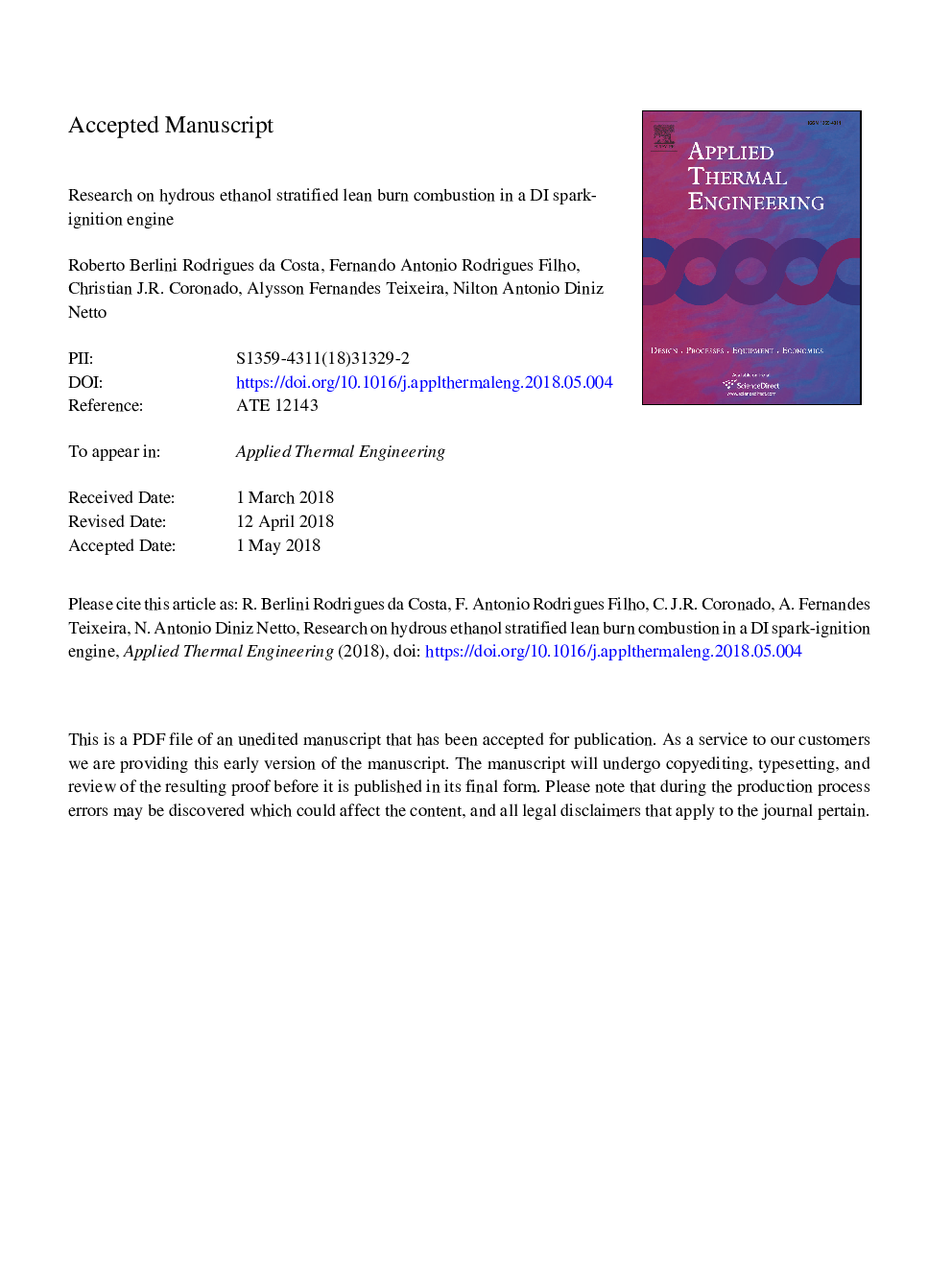| Article ID | Journal | Published Year | Pages | File Type |
|---|---|---|---|---|
| 7045133 | Applied Thermal Engineering | 2018 | 21 Pages |
Abstract
Fulfilling emission restrictions is the most challenging task considering future engine development. Stratified lean burn combustion mode associated with the use of biofuels has been widely studied to overcome current and future environmental regulation and global weather concerns. Power modulation by means of a throttle valve increases the pumping mean effective pressure with a corresponding penalty in engine fuel consumption at part load. De-throttling by means of direct injection (DI) is an attractive way of improving fuel economy and exhaust emissions at low and part load operation in spark-ignition (SI) engines. In this research, a study has been made of the investigations concerning stratified lean burn combustion in a wall-air guided type SI single cylinder optical research engine (SCORE) using Brazilian hydrous ethanol (E100) as fuel. Experiments were conducted at a constant load of 3â¯bar of net indicated mean effective pressure (NIMEP), for a wide range of injection, ignition and mixture formation parameters. Engine fuel conversion efficiency, combustion characteristics and emissions were evaluated for each excess air ratio (λ). Optical visualization illustrated the spray behavior and flame propagation. Specific fuel consumption and engine fuel conversion efficiency achieved an improvement of 8.1% and 2.6%, respectively, for λâ¯=â¯1.4. Engine-out specific emissions were reduced by 66% for nitrogen oxides (NOx) and by 20% for total hydrocarbon (THC) and carbon dioxide (CO). A detailed combustion analysis based on in-cylinder pressure measurement was carried out and provided useful data for ethanol direct injection engine development.
Keywords
EDCpmepNet Indicated Mean Effective PressureE100SATRPMHRRLHVPFITHCTDCMBTEGRGDIaTDCbTDCNOxhydrous ethanollower heating valueResearch Octane NumberNitrogen oxidesUSAafter top dead centerPort-fuel injectiondirect injectiongasoline direct injectionSpark-ignitionCarbon dioxideFederal Test ProcedureRONrevolutions per minuteSOCStart of combustionmotor octane numberbefore top dead centertop dead centercarbon monoxideMONHeat release rateExcess air ratioScoreCO2total hydrocarbonexhaust gas recirculation
Related Topics
Physical Sciences and Engineering
Chemical Engineering
Fluid Flow and Transfer Processes
Authors
Roberto Berlini Rodrigues da Costa, Fernando Antonio Rodrigues Filho, Christian J.R. Coronado, Alysson Fernandes Teixeira, Nilton Antonio Diniz Netto,
